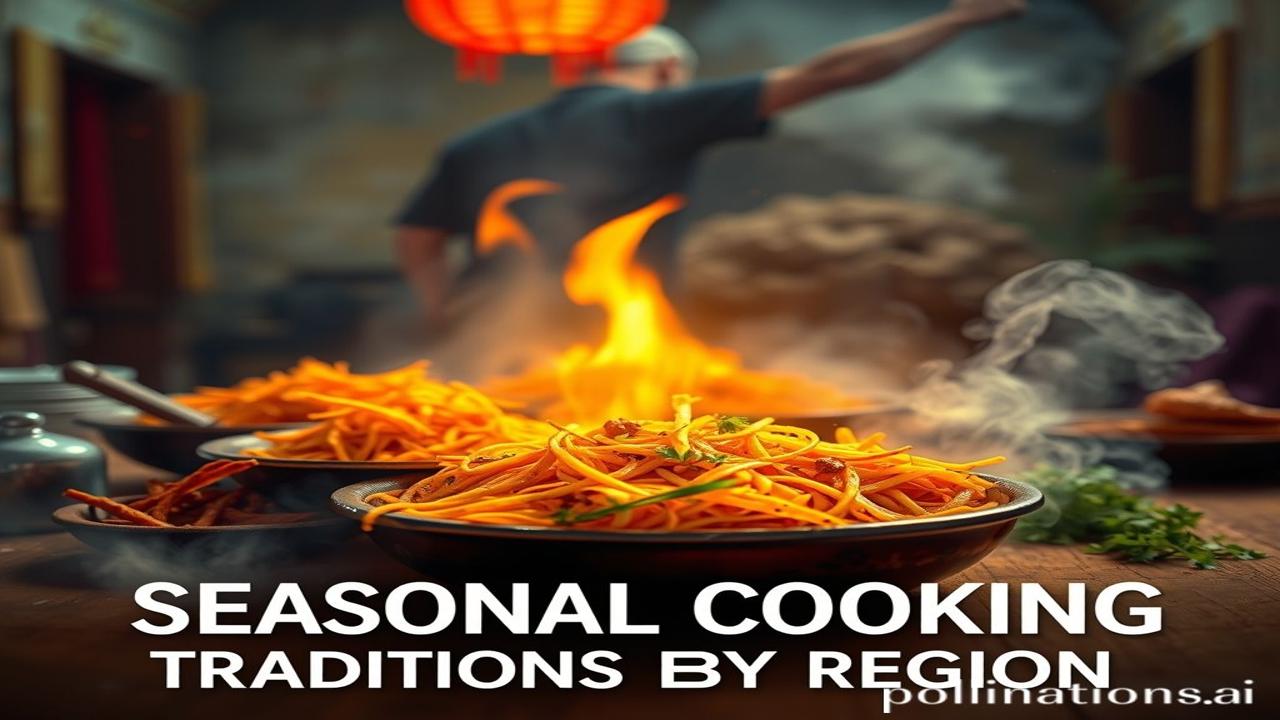Waqt Ki Rasoi: Seasonal Cooking Traditions Across India
Kabhi socha hai, jab Diwali ki hawa mein mithaiyon ki khushboo bharti hai, ya Holi mein rangon ke saath pakwanon ki chatak rangoli banti hai, toh ye sirf tyohaar nahi hote, ye ek zinda dastaan hoti hai. A story etched in our taste buds, passed down through generations – the story of India’s seasonal cooking traditions. Waqt ki dhool mein chhupi hui yeh recipes sirf khaana nahi, sanskriti ka ek hissa hai.
What is Seasonal Cooking, Aur Yeh Itna Important Kyun Hai?
Seasonal cooking, seedhe seedhe, is about using ingredients that are fresh and available during a particular time of the year. This isn’t some fancy modern trend. Think about it – humare ancestors ke paas refrigerators nahi the! They had to rely on what Mother Nature provided, following the rhythms of the seasons.
Historically, this practice is linked to Ayurveda, which emphasizes eating foods that balance the doshas (Vata, Pitta, and Kapha) according to the season. Summer mein cooling foods like cucumbers and buttermilk, winter mein warming spices and root vegetables. This wasn’t just about taste; it was about health and well-being. Imagine a farmer, 3000 saal pehle, carefully choosing his seeds, knowing exactly when to plant based on the monsoon’s arrival.
Bharat Ki Rasoi: A Region-Wise Journey
India’s vast geography and diverse climate have given rise to a stunning variety of seasonal cooking traditions. Let’s take a quick tour:
-
Punjab: Winter brings sarson da saag and makki di roti, a hearty and warming combination that combats the cold. Summer ke liye, lassi and aam panna cool the body. Remember the fields of swaying mustard flowers, the smell of ghee sizzling on the tava?
-
Rajasthan: Summer mein ker sangri, a desert bean, becomes a staple. It’s dried and stored, providing sustenance when fresh produce is scarce. Winter mein gond ke laddoo and bajre ki roti keep you warm. Think of the vibrant colours of Rajasthani textiles and how they echo the bold flavours of the cuisine.
-
Gujarat: Mangoes reign supreme in the summer, leading to aam ras and mango pickle. In winter, undhiyu, a mixed vegetable casserole cooked upside down in earthen pots, is a celebration of the harvest. Picture the bustling streets of Ahmedabad during Uttarayan, the kite festival, with the aroma of undhiyu wafting through the air.
-
South India: Summer is all about rasam, sambar, and cooling rice dishes. Winter welcomes pongal, a sweet rice dish made with jaggery and lentils. Imagine the lush green rice paddies and the sound of temple bells as you savor a plate of hot idli and sambar.
-
Bengal: Monsoon brings ilish machh, a hilsa fish delicacy. Winter celebrates nolen gur (date palm jaggery), used in sweets like rasgulla and sandesh. Think of the serene beauty of the Sundarbans and the gentle rhythm of the river as you enjoy a plate of macher jhol.
Zameeni Sach: The Farmer and the Feast
Imagine a farmer in Maharashtra, his face weathered by the sun. It’s the monsoon season, and he’s carefully tending to his rice fields. His wife, in her colorful nauvari saree, is preparing bhakri, a flatbread made from jowar, and serving it with fresh vegetables. “Yeh varsha ka ashirwad hai,” she says, “the bounty of the rains.”
Or, picture a family in Kashmir, huddled around a kangri (fire pot) in the winter. They’re enjoying harissa, a slow-cooked meat dish, flavored with spices and saffron. The snow-capped mountains provide a stunning backdrop to their simple yet fulfilling meal.
Dharohar Aur Pehchan: Seasonal Cooking Today
Today, even in a world of globalized food, seasonal cooking traditions still resonate in India. You’ll find them celebrated in festivals, in family kitchens, and even in some restaurants that are trying to revive these forgotten recipes. It’s a link to our bharatiyata, a reminder of our connection to the land and the wisdom of our ancestors.
Even in cities, people make a conscious effort to buy seasonal fruits and vegetables. The concept of “farm-to-table” is gaining popularity, echoing the age-old practice of seasonal eating.
Fun Fact or Myth-Buster
Log samajhte hain ki “organic” aur “seasonal” ek hi baat hai. Lekin asli sach yeh hai ki seasonal food, organic ho ya nahi, apne peak nutrition value pe hota hai during its season. While organic farming is beneficial, seasonal eating ensures you’re getting the most out of your produce, regardless.
Visual & Sensory Layer
The air in a Goan village during the monsoon is thick with the smell of wet earth and spices. The temple walls are cool to the touch, offering respite from the humidity. The sounds of raindrops drumming on the thatched roofs blend with the rhythmic chanting of prayers. This sensory tapestry is interwoven with the flavors of the seasonal dishes – the tang of tamarind, the heat of chilies, the sweetness of mangoes.
Antim Vichar
“Annam Brahma” – Food is divine. Let us honor the food we eat by embracing the wisdom of seasonal cooking, a tradition that nourishes not only our bodies but also our souls. This is our dharohar, our legacy, our taste of India.
